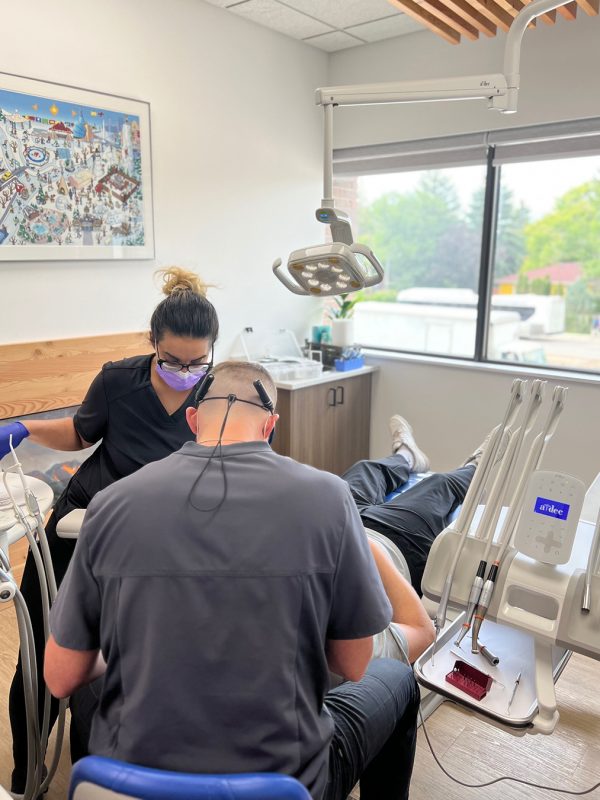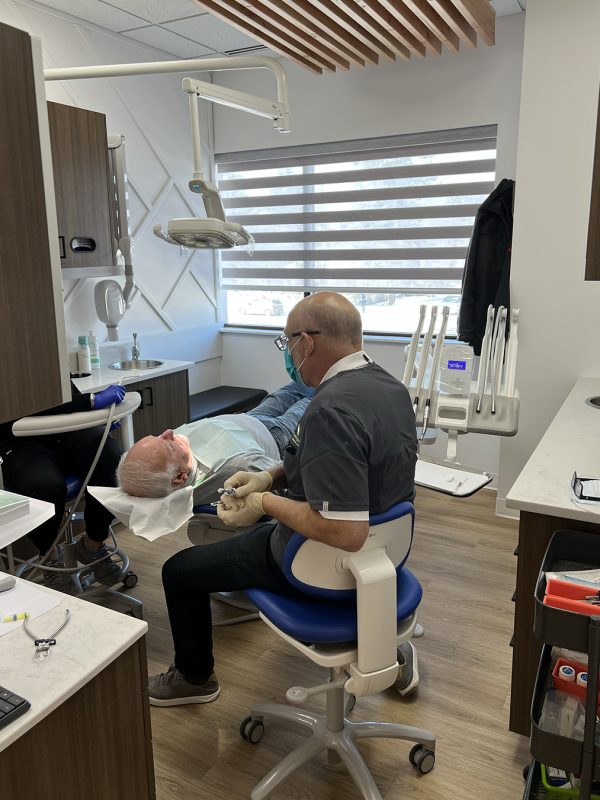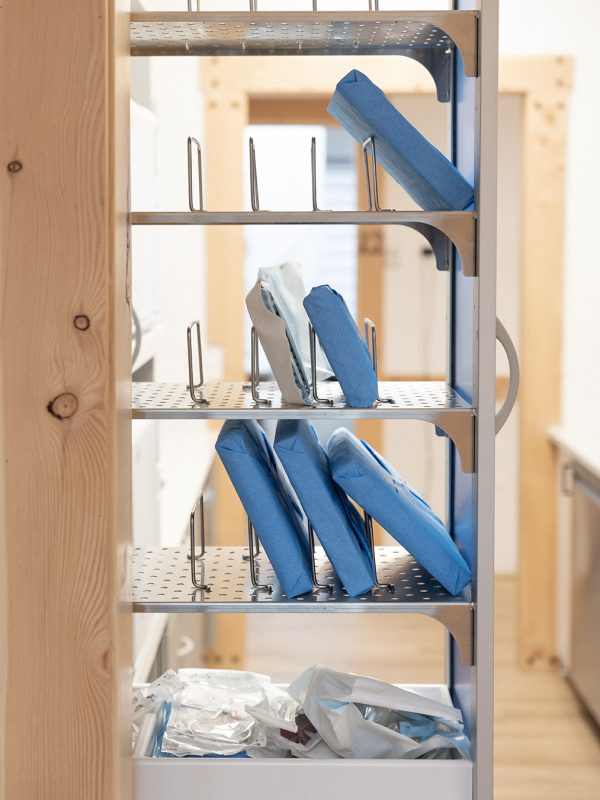RESTORATIVE DENTISTRY
Renew your smile’s glow with specialized restorative services from Evergreen Dental
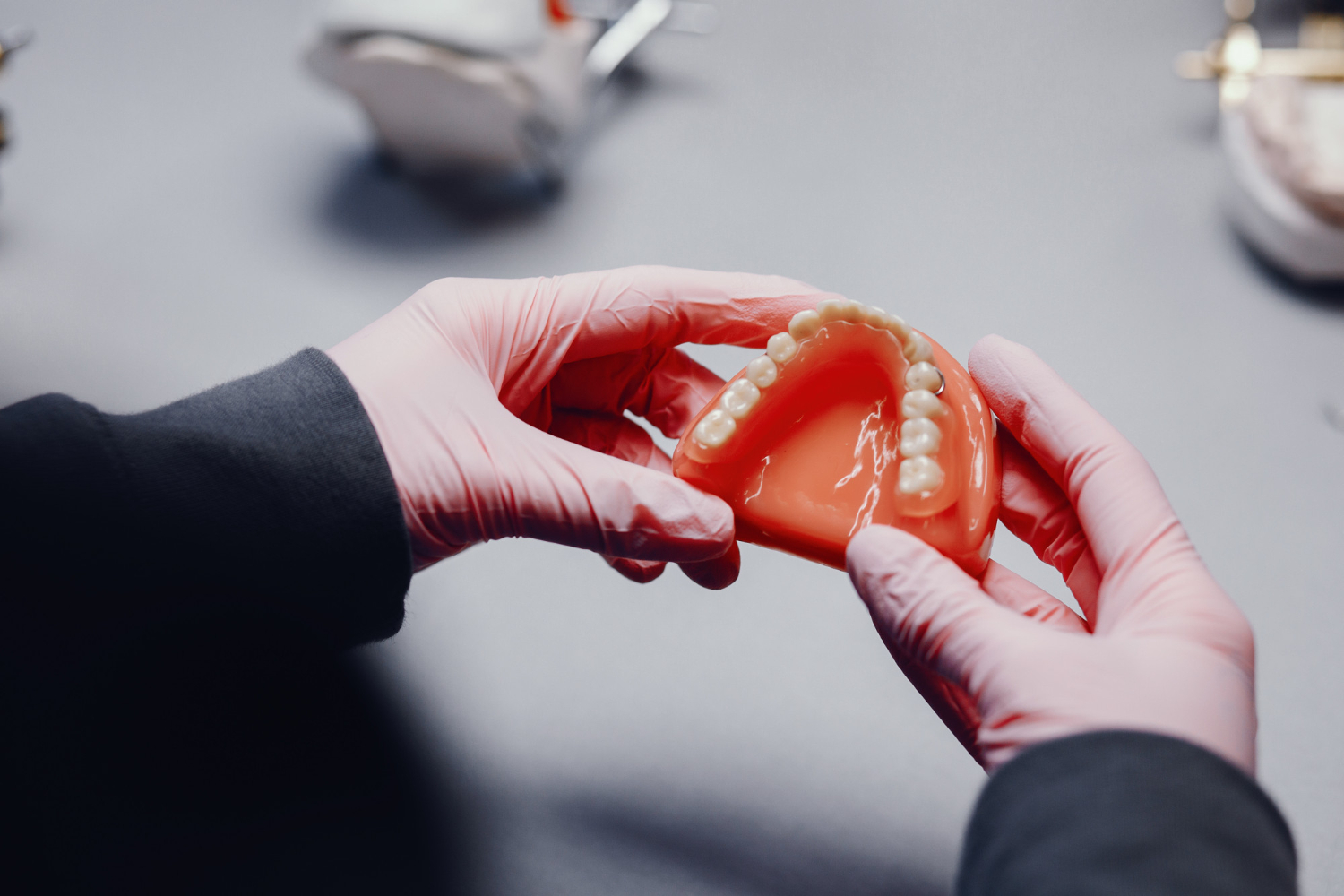
FILLINGS
WHY: When decay moves through the tooth’s enamel, but does not reach the pulp, a filling can be used to restore the tooth.
WHAT: A dental filling is a combination of materials used to repair or restore teeth.
HOW: The first step is to remove the decay from the tooth, material is then placed in your tooth to fill the hole. To complete your restoration the filling is smoothed so that it feels natural to your mouth.
FYI: Filling material can be made of a variety of materials, such as silver amalgam or white resin.

ROOT CANALS
WHY: Sometimes a tooth is significantly decayed or the tooth is fractured deeply, in these cases bacteria is able to deeply penetrate the pulp of the tooth. The pulp is where the nerves and blood vessels are contained. When damage affects a tooth’s pulp chamber a root canal is required. If left untreated, infection can spread to the roots of the tooth and bone causing a painful abscess to develop.
WHAT: A root canal treatment is when the canals of the tooth are cleaned out so that the majority of the tooth’s structure can be saved. Thanks to modern treatment, getting a root canal can be as pain-free as having a cavity filled.
HOW: To begin a root canal procedure an opening is made through the crown of the affected tooth allowing access to the pulp chamber. The decay and damaged pulp is then carefully removed and the canals are cleaned and shaped. Once the canals are cleaned, they are filled and sealed with a material called Gutta-Percha. To anchor the restoration, a post may be cemented in place. The remaining space is then filled and shaped with filling material.
FYI: In order to restore your tooth to its original shape and provide further strength, it is recommended to prepare your tooth and fit it for a new crown.
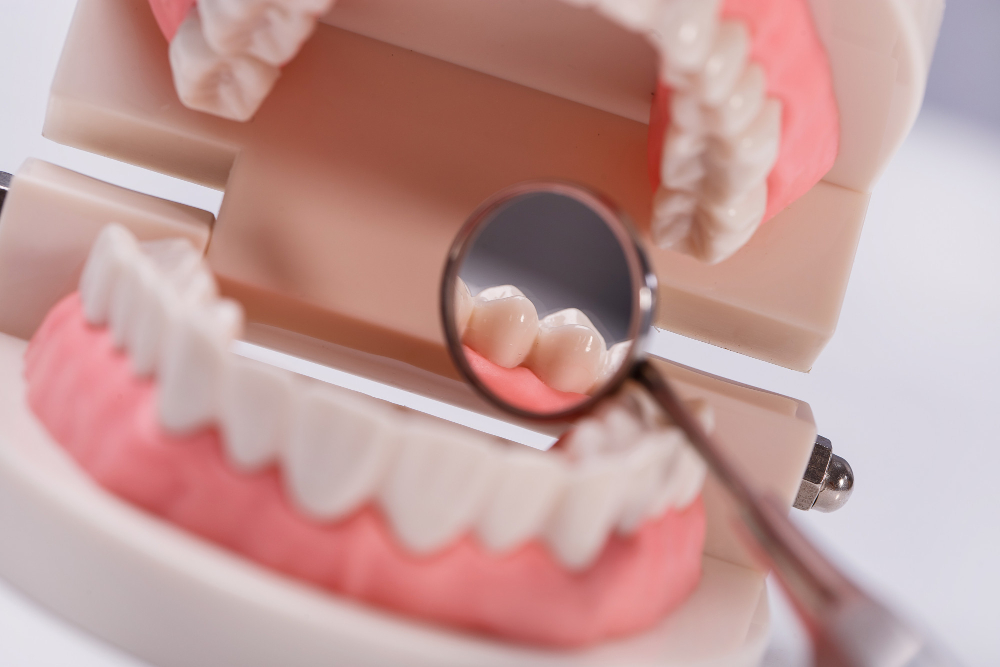
CROWNS
WHY: Sometimes a tooth’s structure has been weakened due to significant decay or subsequent fillings. In these cases a crown restoration is required.
WHAT: A crown is a tooth shaped cap that restores a heavily decayed, broken, weak or worn down tooth.
HOW: To create a new crown, first the decay, and any previous filing , is removed. Next, new filling material is placed to build up and seal the tooth. The tooth is then shaped in preparation for the new crown. Once the tooth is prepared, impressions or scans are taken to model the exact shape required for the crown. A temporary crown is then placed on your prepared tooth until the final crown is ready. Meanwhile your impressions/scans are sent to a dental lab where your final crown restoration is custom made for you. A second appointment is made to place the final crown approximately 1-2 weeks after the preparation. At the 2nd appointment, the temporary crown is removed so that the final crown restoration can be cemented in place.
FYI: Crowns can be made in porcelain, zirconia and gold!

BRIDGES
WHY: When a single tooth is missing it’s important to have it replaced as soon as possible, if not replaced, the surrounding teeth can drift into the empty space having a negative effect on your bite, the health of your other teeth and gums, and the appearance of your smile. One restoration option to replace a missing tooth is a dental bridge.
WHAT: A bridge is a replacement tooth that is attached to the teeth on either side of a missing tooth.
HOW: To create a bridge the neighboring teeth first need to be shaped to prepare for the bridge. Once the teeth are prepared, impressions or scans are taken to model the exact shape required for the bridge. A shade guide is used to determine the color of your surrounding teeth to ensure the restoration looks natural in your mouth. A temporary bridge is then placed on your prepared teeth until the final bridge is ready. Meanwhile, your impressions/scans are sent to a dental lab where your final restoration is custom made for you. A second appointment is made to place the final bridge approximately 1-2 weeks after the preparation. At the 2nd appointment, the temporary bridge is removed so that the final bridge restoration can be cemented in place.
Click Below to Learn More
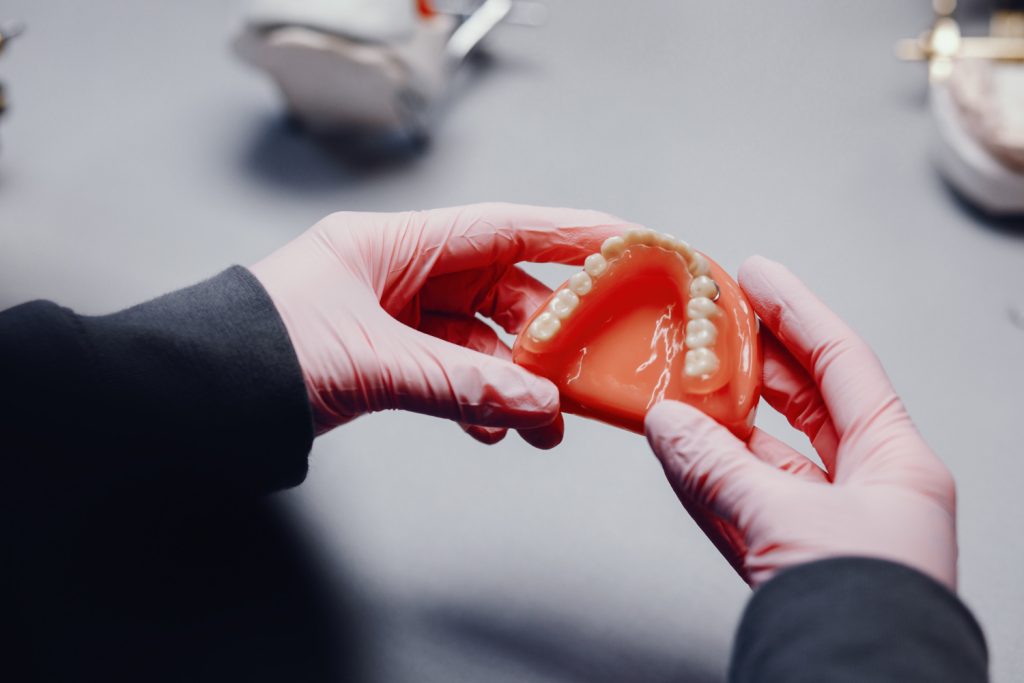
WHY: When decay moves through the tooth’s enamel, but does not reach the pulp, a filling can be used to restore the tooth.
WHAT: A dental filling is a combination of materials used to repair or restore teeth.
HOW: The first step is to remove the decay from the tooth, material is then placed in your tooth to fill the hole. To complete your restoration the filling is smoothed so that it feels natural to your mouth.
FYI: Filling material can be made of a variety of materials, such as silver amalgam or white resin.

WHY: Sometimes a tooth is significantly decayed or the tooth is fractured deeply, in these cases bacteria is able to deeply penetrate the pulp of the tooth. The pulp is where the nerves and blood vessels are contained. When damage affects a tooth’s pulp chamber a root canal is required. If left untreated, infection can spread to the roots of the tooth and bone causing a painful abscess to develop.
WHAT: A root canal treatment is when the canals of the tooth are cleaned out so that the majority of the tooth’s structure can be saved. Thanks to modern treatment, getting a root canal can be as pain-free as having a cavity filled.
HOW: To begin a root canal procedure an opening is made through the crown of the affected tooth allowing access to the pulp chamber. The decay and damaged pulp is then carefully removed and the canals are cleaned and shaped. Once the canals are cleaned, they are filled and sealed with a material called Gutta-Percha. To anchor the restoration, a post may be cemented in place. The remaining space is then filled and shaped with filling material.
FYI: In order to restore your tooth to its original shape and provide further strength, it is recommended to prepare your tooth and fit it for a new crown.

WHY: Sometimes a tooth’s structure has been weakened due to significant decay or subsequent fillings. In these cases a crown restoration is required.
WHAT: A crown is a tooth shaped cap that restores a heavily decayed, broken, weak or worn down tooth.
HOW: To create a new crown, first the decay, and any previous filing , is removed. Next, new filling material is placed to build up and seal the tooth. The tooth is then shaped in preparation for the new crown. Once the tooth is prepared, impressions or scans are taken to model the exact shape required for the crown. A temporary crown is then placed on your prepared tooth until the final crown is ready. Meanwhile your impressions/scans are sent to a dental lab where your final crown restoration is custom made for you. A second appointment is made to place the final crown approximately 1-2 weeks after the preparation. At the 2nd appointment, the temporary crown is removed so that the final crown restoration can be cemented in place.
FYI: Crowns can be made in porcelain, zirconia and gold!

WHY: When a single tooth is missing it’s important to have it replaced as soon as possible, if not replaced, the surrounding teeth can drift into the empty space having a negative effect on your bite, the health of your other teeth and gums, and the appearance of your smile. One restoration option to replace a missing tooth is a dental bridge.
WHAT: A bridge is a replacement tooth that is attached to the teeth on either side of a missing tooth.
HOW: To create a bridge the neighboring teeth first need to be shaped to prepare for the bridge. Once the teeth are prepared, impressions or scans are taken to model the exact shape required for the bridge. A shade guide is used to determine the color of your surrounding teeth to ensure the restoration looks natural in your mouth. A temporary bridge is then placed on your prepared teeth until the final bridge is ready. Meanwhile, your impressions/scans are sent to a dental lab where your final restoration is custom made for you. A second appointment is made to place the final bridge approximately 1-2 weeks after the preparation. At the 2nd appointment, the temporary bridge is removed so that the final bridge restoration can be cemented in place.








